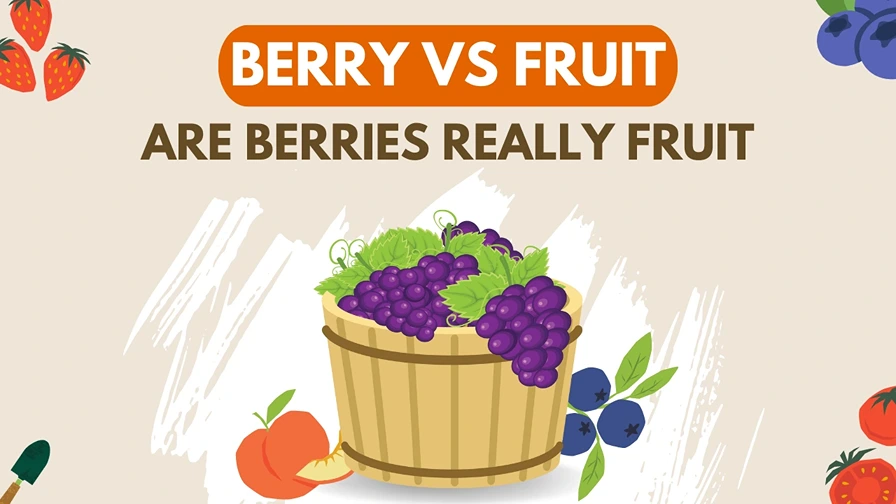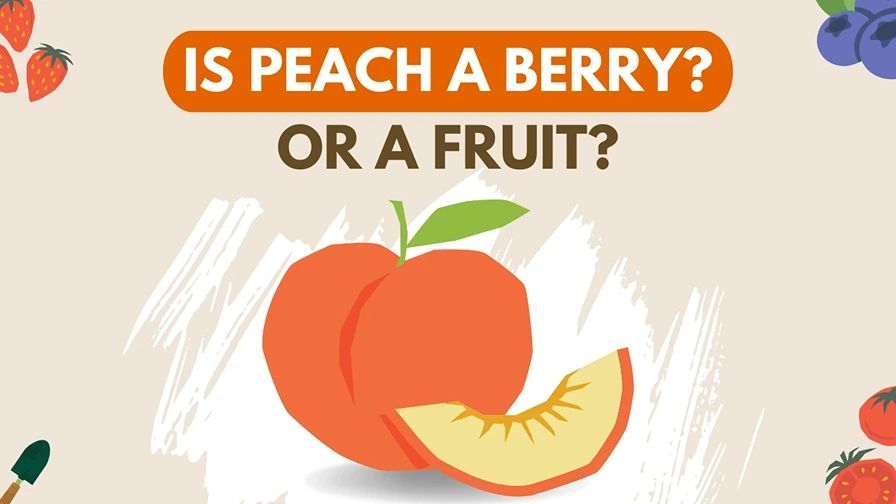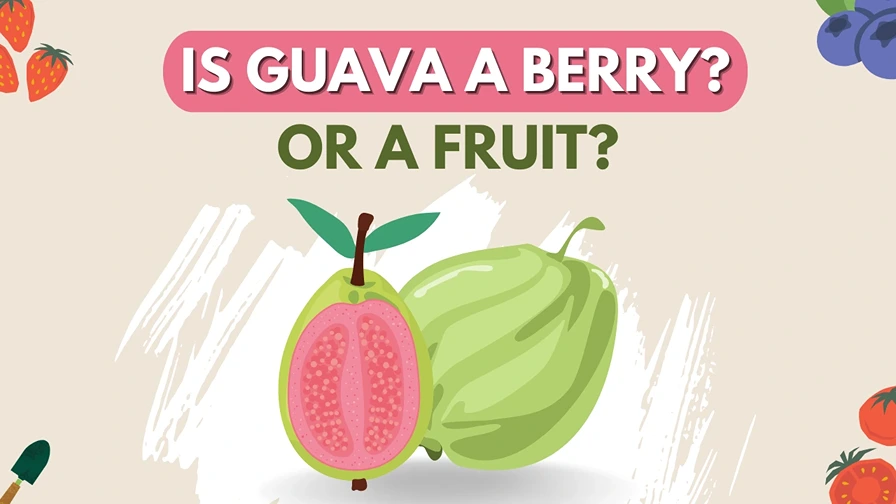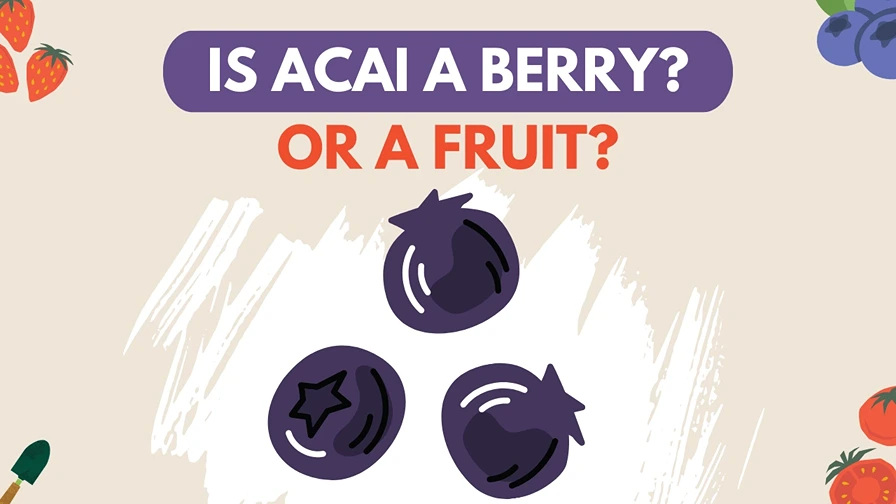Scientists estimate that there are about 20,000 species of fruits in the world. Out of which only about 2500 are discovered until now and are classified into 3 distinctive major categories. Plum lies in one of these categories. But have you ever thought, is plum a berry or a fruit?
You must have seen abundant fresh plums in the market and this question would have come to your mind.
To reduce your curiosity in a short and sweet way – Plum is a fruit and specifically a drupe fruit.
But didn’t you sometimes think about plums as berries? It’s about time to unravel the mystery surrounding plums and determine where plum lies in this berry vs fruit debate.
So, let’s embark on a journey of discovery together as we explore the true nature of plums.

What is a Plum?
Before we submerge ourselves into the question of whether a plum is a berry or a fruit, let’s first gather some basic information about plums.
A plum is a delicious and juicy fruit that belongs to the Prunus genus, which encompasses various fruit-bearing trees in the Rosaceae family. There are an amazing number of flavors and varieties of plums that can have a lot of benefits for your beautiful health and lawn. They are very good sources of vitamin C, K, and fiber.
Scientific Classification
As we have explained in our previous articles, there are three botanic categories of fruits. The first is Simple fruit consisting of Berry, Drupe, Pome, and Hesperidium. Second is Aggregate Fruit and third is Multiple Fruit.
Plums are scientifically classified as drupes, a specific type of fruit that has a fleshy outer layer, a hard pit (also known as a stone or endocarp) in the center, and a seed inside the pit. The fleshy outer layer of the plum, often referred to as the mesocarp, surrounds the pit and contributes drastically to the fruit’s taste and texture.
Plum trees, scientifically known as Prunus domestica, are native to several regions around the world and have been cultivated for centuries. These deciduous trees typically grow to varying heights, depending on the variety, and produce beautiful flowers in spring, which eventually give way to the fruit we know as plums.
Structure
Plums come in a variety of colors, including red, purple, yellow, and green. They vary in size and shape as well, ranging from small and round to oval or even slightly elongated. The skin of plum can be smooth or slightly fuzzy, depending on the specific variety.
When it comes to your taste buds, plums offer a delightful balance of sweetness and tartness, making them a popular choice for both eating fresh and using in various culinary applications. They are often enjoyed as a refreshing snack, incorporated into fruit salads, used in desserts like pies and tarts, or transformed into flavorful jams and preserves.
Nutritional Benefits
Plums are not just delicious; they also offer nutritional benefits. They are a good source of vitamins, particularly vitamin C, as well as dietary fiber and antioxidants. Consuming plums as part of a balanced diet can contribute to overall health and well-being.
Now that we have a better understanding of what a plum is and its basic characteristics, let’s explore the intriguing question of whether plums should be classified as berries or fruits.
Why is Plum a Fruit?
There are several reasons why plums are classified as fruits rather than berries. Let’s explore why plums fall into the fruit category:
1. Botanical Definition of Fruits:
From a botanical standpoint, fruits are the mature ovaries of flowering plants that contain seeds. After pollination and fertilization, the ovary develops into a fruit to protect and disperse the seeds.
Plums fit this botanical definition as they develop from the fertilized ovary, with the fleshy mesocarp surrounding the hard pit that houses the seed. Thus, plums meet the criteria for being classified as fruits.
2. Drupe Classification:
Plums are specifically classified as drupes, a type of fruit characterized by having a fleshy outer layer, a hard pit, and a seed inside the pit.
Other examples of drupes include peaches, cherries, and apricots. The presence of a pit with a seed firmly places plums within the fruit category.
3. Fruit Characteristics:
Plums possess typical characteristics associated with fruits. They have sweet and juicy flesh, making them enjoyable to eat. Plums also exhibit a variety of colors, flavors, and textures, further exemplifying their fruit-like qualities.
4. Common Usage and Culinary Practices
In both common usage and culinary contexts, plums are recognized and referred to as fruits. They are commonly found in the fruit section of grocery stores and are used in various culinary preparations such as desserts, jams, and beverages. Plums are seldom associated with specific characteristics or usage patterns of berries.
Considering these factors, it becomes evident that plums are unequivocally categorized as fruits. They align with the botanical definition of fruits, fall under the drupe classification, possess fruit-like characteristics, and are widely referred to as fruits in everyday language and culinary practices.
Is Plum Also A Berry?
While plums share certain similarities with berries, they do not fall under the classification of true berries. Here are the reasons why plums are not considered berries:
1. Botanical Definition of Berries:
Botanically speaking, berries are fruits that develop from a single ovary, typically containing multiple seeds. Berries have a fleshy pericarp (the entire fruit wall) that is soft and often edible. Examples of true berries include grapes, tomatoes, and blueberries.
In contrast, plums develop from a single ovary, but they have a hard pit (endocarp) that contains a single seed, which does not align with the botanical definition of berries.
2. Structural Differences:
True berries, such as blueberries or grapes, have a relatively uniform structure throughout, with the seeds distributed evenly within the fleshy fruit.
Plums, on the other hand, have a distinct structure with a fleshy outer layer (mesocarp) surrounding a hard pit. This structural dissimilarity sets plums apart from the characteristics of typical berries.
3. Culinary and Common Usage:
In everyday language and culinary contexts, plums are not commonly referred to as berries.
Berries are often associated with small, round fruits that can be consumed directly, while plums are recognized as larger, oval, or round-shaped fruits with a pit in the center. This differentiation in culinary and common usage further emphasizes that plums are not classified as berries.
Considering these factors, it becomes clear that plums do not fit the botanical criteria or the common understanding of what berries are. Despite having some similarities in terms of taste and texture, plums possess distinct characteristics that set them apart from true berries.
Therefore, while plums are undoubtedly delicious and fall within the fruit category, they are not classified as berries.
Common Fruits That Are Also Berries!
Plum is not a berry, but there are other well-known fruits that are considered to be typical fruit but are classified as berries. Let’s learn about these:
- Grapes: Grapes are small, round fruits that grow in clusters on vines. They are a popular fruit enjoyed fresh, used in cooking, or made into wine. From a botanical standpoint, grapes are considered berries due to their fleshy pericarp and multiple seeds.
- Avocado: Avocado is a unique fruit known for its creamy texture and high healthy fat content. Despite their large size and single-seeded nature, avocados are classified as berries. The large seed within the fleshy pericarp meets the botanical definition of a berry.
- Papaya: Papaya is a tropical fruit with sweet, orange flesh and numerous black seeds. While we commonly refer to papaya as a fruit, it is actually classified as a berry due to its fleshy pericarp and seed distribution.
- Persimmon: Persimmon is a fruit with a distinct flavor and orange-colored flesh. Although it may not resemble typical berries in appearance, persimmons are classified as berries from a botanical perspective. They develop from the fertilized ovary of the persimmon flower and contain seeds within their fleshy pulp.
- Eggplant: Eggplant is a popular vegetable in culinary dishes, but it is technically classified as a berry. Eggplants belong to the nightshade family and develop from the ovary of the eggplant flower. They have smooth, purple skin and soft, creamy flesh.
- Passionfruit: Passionfruit is a tropical fruit known for its aromatic flavor and distinctive appearance. It has a tough outer shell and a juicy, seed-filled interior. Despite its name and appearance, passionfruit is botanically classified as a berry due to its fleshy pericarp and seed distribution.
The list can go on as there are many other fruits that are berries but not referred to as a berry!
Conclusion
After exploring the classification of plums and examining why they are considered a fruit and not a berry, we have a better understanding and we can now draw a clear conclusion.
Plums are undoubtedly classified as fruits.
They meet the botanical definition of fruits, developing from the fertilized ovary and containing a seed within their hard pit. Plums also possess fruit-like characteristics, such as their juicy flesh and varied flavors, which contribute to their classification as fruits.
While plums may share certain resemblances with berries, such as being sweet and delicious, they do not meet the specific criteria that define true berries. Plums have a distinct structure with a fleshy outer layer and a hard pit, setting them apart from the characteristics of typical berries.
In both culinary usage and everyday language, plums are commonly referred to as fruits rather than berries. They are enjoyed fresh, used in various culinary preparations, and recognized as larger, oval, or round-shaped fruits with a central pit.
In conclusion, plums are undeniably fruits—juicy, flavorful, and a delight to the taste buds!




